Part Two of a Three Part Series
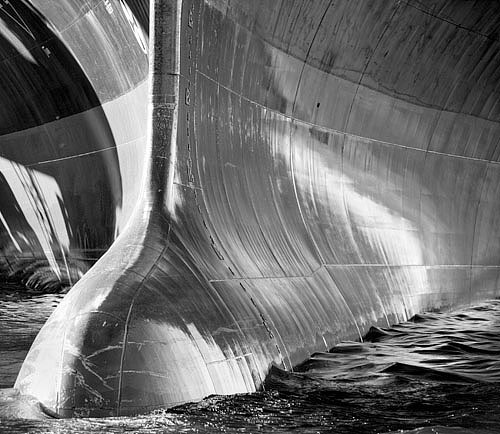
Assessing Your Technical And Aesthetic Skills
Welcome back to part 2 of a three part series on finding your skill level and developing a strategy to move up to higher levels. The premise is that if you know how good you are; and by inference what it would take to be better, then you can come up with a plan to make that move.Last timewe discussed the various technical and aesthetic levels which we tend to move through. It would not have been difficult to come up with different definitions for the levels, but I felt that the descriptions were both useful and realistic for many amateur photographers working through the ranks.
Perhaps you already know what level you are based on the descriptions in the previous article. Just as a quick reminder here’s theReaders Digestcondensed version.
Technical
1.4X6 prints often have noticeable technical flaws – focussing, steadiness, framing.
2.8X10 prints show flaws, print manipulation is either absent or flawed.
3. Prints look good to non photographers but not to experienced observers.
4. Prints have no obvious flaws but aren’t rich, deep, subtle, three dimensional.
5. Prints look great though presentation lacks.
6. Prints look perfect.
Aesthetic
A. Prints don’t seem to have a point, and don’t make good snapshots.
B. Decent snapshots.
C. Friends are admiring your ‘snapshots’
D. Prints starting to have artistic value for themselves.
E. Prints are admirable but not wonderful – lacking emotional impact.
F. Strong images, great composition, making the point, lovely!
G. The handful of the very best images ever made – the icons of photography.
I have been asked how I would select images upon which to base one’s level. I would suggest selecting a ‘portfolio’ of your best one to three dozen images and use those as a guideline. In addition, you could look at all the images from a single shoot to see how consistent is the quality of your images. If you can consistently produce one strong image from a day’s shooting, you are doing very well and the quality of that image tells us more than anything.
______________________________________________________________
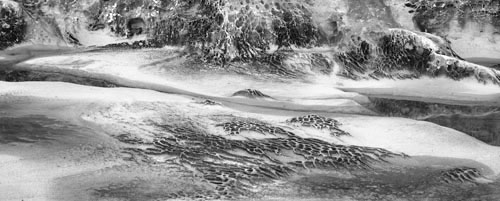
Self Assessment
So you have gathered together a portfolio of your images and you are trying to see if you can assess your own level of skill. You have a rough idea from the descriptions of the previous article, but you are not sure. How about finding some published images in a magazine of good reproduction and holding them up next to yours. It might be worth $10 to rip up a copy of Lenswork, Phot’Art, Focus, B&W or whatever so you can get a better comparison. Alternatively compare your images on the web to those of better known photographers of similar interests. You may not be able to assess things like resolution on the web, but you sure can look at the more important issues of impact, composition, and overall tonality.
______________________________________________________________
Getting Help
I would suggest that even if you have a fairly good idea which of the above categories best describe your skills you would benefit from checking with outside sources to see if your self-evaluation is on the mark.
In this part of the series I’m going to discuss some ways you might be able to do that. This could be perceived as a little bit scary because in asking others about how good is our work, we run the risk they may actually tell us, and heaven forbid, we might not like the answer.
I think a lot of photographers have a split personality – on the one hand we are extremely proud of the images we create and can be overly confident of their value. At the same time, many of us have that nagging doubt about our abilities and are convinced we are going to wake up one of these days to the realization we are ‘crap’ photographers who should find another hobby – say beer bottle cap collecting. Unfortunately what this dichotomy translates into is that we seem to bounce from one view to the other. We make a good image and we think we are the next Ansel Adams, but receive one valid negative comment and we are devastated and ready to give up the hobby. A few good shoots and we are on top of the world, one bad one and out come the bottle caps. Maybe I’m the only neurotic one on the block, but I suspect not.
There are discussions on the net currently about the destructive value of negative criticism, and no doubt it’s true, but how else are we going to get the feedback and evaluation we need. We are going to have to gird our loins and not only take the feedback but learn from it. Hey, I said this might be faster, I didn’t say anything about it being painless. The good news though is that it doesn’t have to be and shouldn’t be an ongoing process – we don’t need regular flogging – just occasional, interspersed with lots of positive feedback.
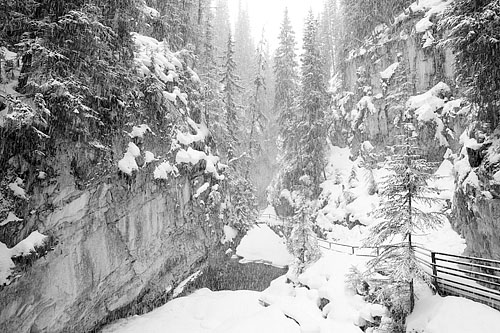
______________________________________________________________
Obtaining Feedback
Useful feedback can come from a number of sources. Handiest would be our families. As guides to our levels in the art of photography they almost certainly aren’t ideal. They are biased, are in a bind if they really think it’s crap, and are usually uneducated in the art of photography (assuming they didn’t listen to all our boring dinner conversations). That said, I frequently have my wife look at prints for me. Responses range from silence to ‘Not one of your better ones’ to ‘I like that one better’ to ‘Wonderful’. Though she has no photographic skills and wouldn’t know a good dodging effort from a poor sharpening one, her immediate emotional response is still useful. Still, helping sort out your better images isn’t what’s needed here – we need to know our overall level (and it wouldn’t hurt to stay married – you may think being married puts a crimp on your spending on photographic gear, wait till you pay for a divorce – your lawyer will certainly be able to afford a new camera).
Next most convenient is to ask our photographic friends. A friend may not be an Ansel Adams but many at least know what a great print looks like and can point out the flaws of our images. We can tell a sour note even if we can’t play the violin. Typically friends don’t want to hurt your feelings so the information may not work as well as you hope, but the price is right. It is however, a lot to ask of your friends and perhaps isn’t fair.
Consider joining a local camera club. They often have contests and print critiques with guest experts. Friends who would be reluctant to criticize your photography individually, become more open at a critique and will offer useful comments. The feedback from fellow members reflects the quality of their work and usually is in the lower to middle levels, the quality of critiques depends on the skill of the reviewer.
What we need is to invite Ansel’s ghost over for a good haunting. Barring the supernatural however, we could go looking for a photographer who’s skill we know to be higher than ours. This could take the form of a local successful fine art photographer. Since we don’t actually need his advice on how to get to the next level, the person doesn’t even have to be a photographer – they just need to know a lot about fine images. This would open it up to gallery and museum curators, photographic book publishers, editors and the like. I remember years ago the late Fred Picker offering to perform this service for a very reasonable price per print, all of which went to charity. He had very few takers – what a waste. For the price of a few boxes of paper, you could have had the opinion of an expert. Fred wasn’t famous for his photographs but he was certainly competent and he loved and collected photography and would have made a superb reviewer (don’t ask if I ever sent some prints for review – I didn’t – dumb huh?).
It takes nerve to ask someone you respect or in authority to take the time to not only look at your photographs but provide some insightful feedback. Doing so is a skill in itself and being a good photographer doesn’t necessarily make you good at providing feedback – you might be able to play that violin but it doesn’t necessarily make you a good teacher.
The single best source of feedback is to attend a workshop which includes print reviews (most do). Workshop instructors who have a track record have learned to provide useful feedback. For myself I attended a Fred Picker Zone VI workshop back in the 80’s. Fred had some excellent instructors at the workshop and you received a variety of viewpoints and by the end of the workshop had a pretty darn good idea of where you stood.
Smaller workshops with one or two instructors can also be helpful however and you don’t have to fly to the Antarctic to do so. Three weekend workshops I attended were Bruce Barnbaum, Craig Richards and Michael Reichmann himself, the latter being a Luminous-Landscape weekend in Algonquin in the Fall.
Typically the students at workshops show a variety of levels of skill, some bring drug store 4X6es while others have already been published. Some are excellent technicians while others bring an artistic background. It was the lady with the 4X6es that had a wonderful eye and had some of the strongest images of the entire workshop, and some useful feedback on others’ images – beyond ‘I’d like it a bit darker’.
______________________________________________________________

But I Don’t Know Anyone
O.K., your budget and schedule or your location preclude finding a local gallery owner or attending a good workshop, what are your options?
Actually, they aren’t bad. A number of websites offer the ability to not only upload images that others can see but are organized around critiques and supplying feedback.
For some time I submitted images toPhotosig.I would submit a photo and over the next few days while it remained near the top of the �in� stack I would get comments. For a start, the number of comments gives you some idea of how you are doing. The comments themselves vary from the overly nice to detailed and thoughtful, from outright rejection for no apparent reason, to pointed but �on the mark� comments worth a lot.
There are limitations to Photosig (and I’m assuming other similar sites). First off people decide to look at your image based on it’s thumbnail – and not all good photographs make eye catching thumbnails.
Secondly, top ranked images tend to be dramatic, very colourful and a bit calendar like. Even the black and white images which are popular tend to be very graphic and bold. Subtle just doesn’t cut it.
The third concern is that the feedback one obtains is most useful moving from beginner to intermediate, or in other words, for people who find themselves in the first few levels. Technical flaws are easier to deal with and get the most attention and the most useful feedback. Advice about creativity is much harder to give. Still, we were looking to identify our level more than looking for advice so give it a shot.
Other sites work a similar way, such asphoto.net. One site that offers daily critiques of select images isRadiant Vista. While the odds of getting even one of your images critiqued in this way isn’t great – looking through critiques of others work will give you a sense of the problems with your own work. After listening to a couple dozen critiques, it isn’t that hard to apply the same kind of thinking to your own images.
Submitting work for publication while not usually generating any feedback other than ‘yes, we will publish it’ or ‘no, please try again’, at least can give you some idea of your position if you are in one of the higher levels but not quite sure which one. A single image published on a ‘Readers Gallery’ suggests you are on the right track.
There are formal reviews of work available. One of the most prominent is Review Santa Fe in which hundreds of photographers submit 20 images each and 90 are selected to come to Santa Fe (at the photographers expense, plus a hefty review fee of $595) and receive 9 formal reviews over 2 days from a mix of publishers, gallery owners and museum curators. I understand there are a number of other similar reviews. Clearly you need to be fairly high up the scale for this to be an option. While expensive, feedback from people who have attended indicates that it is a tremendous experience.
For most photographers I still have to strongly recommend the workshop as the single best way to get a sense of your position on the scale.
______________________________________________________________
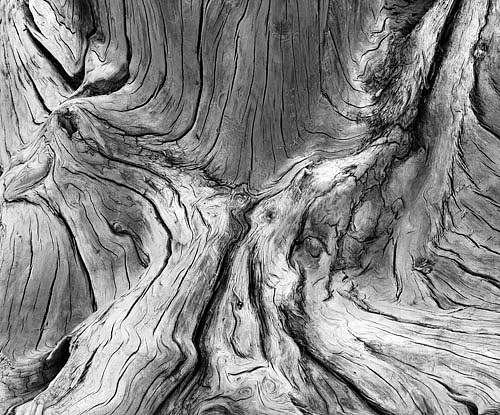
How To Translate Feedback Into Levels
Chances are, no matter who provides the feedback, they aren’t going to point to level 3D, say, ‘that’s you buddy’ see you around’ and walk off. I think you’d be a bit upset if that’s all they did, even though the premise of this series of articles is that this would be very useful information. No, you are going to have to interpret the comments made to determine your level.
I think it’s fairly simple to interpret the technical comments and determine your level so I’m going to concentrate on interpreting the artistic merit comments.
Reviewers are looking for something good to say and what is said can tell you a lot about the strengths and weeknesses of the print. A comment that an image has a really nice matte is not a good start. If the work is original, interesting or strong, it’s likely the reviewer is going to comment on those elements. A lack of such comments should frankly be interpreted as ‘needs work’.
â��What were you trying to say?” translates into I donâ��t see a point to your picture and if I knew what it was I might be able to help you express it.
If the reviewer ‘gets’ why you took the picture then the message is fairly clear.
A good reviewer is not likely to put a lot of emphasis on what’s wrong with your image. Rather they will talk about how to make it better. Reviewers often look at one image at a time and may not make any comments about the whole collection and almost certainly won’t make any comments about you and your work in general. That said, they can often be cornered later for a more frank discussion of your strengths and weaknesses – while driving for example (not looking at images, please), or at lunch. In my experience, workshop leaders presume that they are at your beck and call the whole workshop except for a little sleep. Some people have very fragile egos and workshop leaders learn to tread carefully, but if you ask for them to be frank, they will try to level with you.
Look to the comments of the other students – do they ‘get it’? It doesn’t take long to learn that some of the participant are very observant and can offer insightful feedback, regardless of the prints they show.
Listening To Your Fellow Participant’s Critiques
You might find yourself listening to high praise for an image by another participant and you can’t see it – the image is out of focus or badly printed, yet the instructor seems excited – it can be difficult to look past the obvious and see the value in the work, yet recognizing it in the work of others is preliminary to finding, selecting, and making images of artistic value for ourselves.
The other aspect of a print critique is that of seeing the work of others and comparing it to your own. This is every bit as valuable as the feedback you get about your own prints. It’s not difficult to see the flaws in your own prints when the stand up against those of others, both technically and aesthetically. Do your prints look muddy and gray compared to those of other participants – or too contrasty – too dark – or too colourful? Do their images seem to have a point, a centre of interest, a reason for being taken while it’s hard to see these in your own images? Often images are put up one photographer at a time but during a break you could lean some of your work on the wall next to that of someone whose work you liked.
______________________________________________________________
The Virtual Workshop
You can help yourself without even going to a workshop by asking yourself some of the typical workshop questions.
What was I trying to say?
Did I say it in the strongest way possible?
Was there a different way to compose the picture to make it stronger?
Did I eliminate all extraneous features?
Did I find the best position, the best time to take the photograph?
Did I make a print which showed the subject to best advantage?
______________________________________________________________
Conclusion
It’s really challenging to assess one’s level of ability in isolation. We need to look at the work of others, we need to receive feedback about our own work. If you use some of the above ‘tools’ it shouldn’t be too hard to assess your level of skill. And that brings us to actually using this information to move up a level, to make a quantum leap, to take a ‘giant step’ upwards in our work, and of course, that’s the topic for next time.
George Barr
March, 2007
________________________________________________________
About George Barr
I am a 57 year old family physician. The switch to digital a few years ago was like a light going on – my creativity was unleashed to a degree I’d never had before. It opened the possibilities of colour work after almost 40 years of black and white only. A weekend workshop gave me the courage to show my work and has since led to being published inLenswork,Black And Whiteand alsoBlack And White Photography Magazinefrom Britain andFocusmagazine in the U.S. My website ishttp://www.georgebarr.comand my blog is athttp://www.georgebarr.blogspot.com.
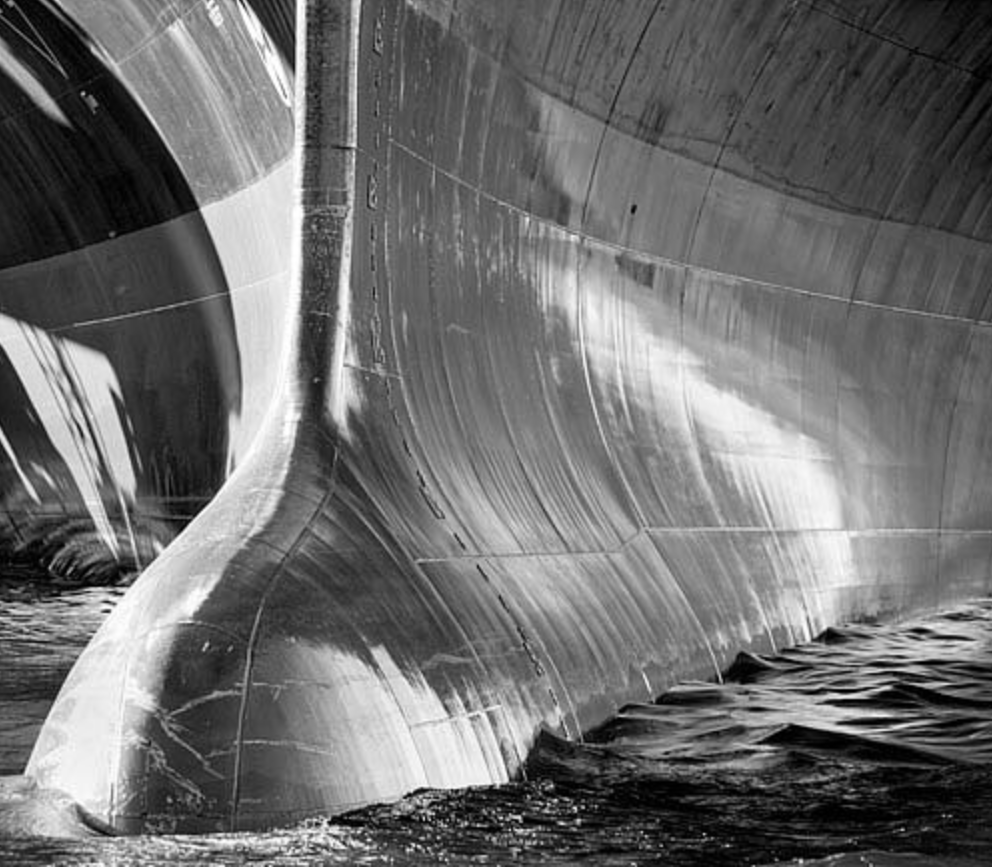
Lorem ipsum dolor sit amet, consectetur adipiscing elit, sed do eiusmod tempor incididunt ut labore et dolore magna aliqua. Ut enim ad minim veniam, quis nostrud exercitation ullamco laboris nisi ut aliquip ex ea commodo consequat. Duis aute irure dolor in reprehenderit in voluptate velit esse cillum dolore eu fugiat nulla pariatur. Excepteur sint occaecat cupidatat non proident, sunt in culpa qui officia deserunt mollit anim id est laborum.
Lorem ipsum dolor sit amet, consectetur adipiscing elit, sed do eiusmod tempor incididunt ut labore et dolore magna aliqua. Ut enim ad minim veniam, quis nostrud exercitation ullamco laboris nisi ut aliquip ex ea commodo consequat. Duis aute irure dolor in reprehenderit in voluptate velit esse cillum dolore eu fugiat nulla pariatur. Excepteur sint occaecat cupidatat non proident, sunt in culpa qui officia deserunt mollit anim id est laborum.
Lorem ipsum dolor sit amet, consectetur adipiscing elit, sed do eiusmod tempor incididunt ut labore et dolore magna aliqua. Ut enim ad minim veniam, quis nostrud exercitation ullamco laboris nisi ut aliquip ex ea commodo consequat. Duis aute irure dolor in reprehenderit in voluptate velit esse cillum dolore eu fugiat nulla pariatur. Excepteur sint occaecat cupidatat non proident, sunt in culpa qui officia deserunt mollit anim id est laborum.
Lorem ipsum dolor sit amet, consectetur adipiscing elit, sed do eiusmod tempor incididunt ut labore et dolore magna aliqua. Ut enim ad minim veniam, quis nostrud exercitation ullamco laboris nisi ut aliquip ex ea commodo consequat. Duis aute irure dolor in reprehenderit in voluptate velit esse cillum dolore eu fugiat nulla pariatur. Excepteur sint occaecat cupidatat non proident, sunt in culpa qui officia deserunt mollit anim id est laborum.
You May Also Enjoy...
Yemen
In a popular Yemeni joke, God returns to see what has changed on Earth over the millennia. An angel flies him over Europe and God
The Best Light
— Part Four of Nine — How to Find the Best Light for a Specific Photograph Article and Photographs by: Alain Briot Alain Briot is
